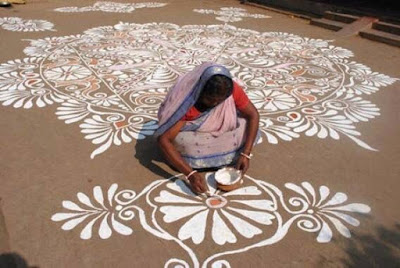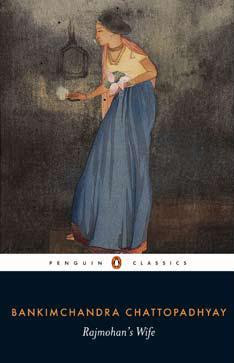The folk art that became associated with royalty and festivity
Thanks
to the rich history and diversity of this subcontinent, there is something new
in every corner and every nook has something different and enthralling to
offer. We Bengalis are known for our festivities too besides food, literature,
sports, cinema and music and there is a saying in Bangla, ‘baro mashe tyaro
parbon’, which literally means ’13 festivals in 12 months’, it only says
how much we love festivities and leave no chance to celebrate. But, two of the
fondest memories of festivities at home for me has to be Saraswati Pujo
and Lakshmi Pujo. Saraswati Pujo takes place in the Bengali month
of Maagh (January-February) and Lakshmi Pujo during Aashshin
(September-October). Aashshin is the month of autumn and during Maagh
its almost spring. On these days, the whole household would have a different
flow of energy and we all would be busy since morning trying to do our best to
make the mother goddesses happy. But the fondest memories from these
festivities have to be Alpona. Those white geometric and floral designs
made out of a semi-liquid paste of soaked Ātop Chāl are something that
makes me remember home, makes me remember the festivities, the rituals and even
the food.
Alpona
has always fascinated me a lot because unlike many other art forms, this has
traditionally been with one colour and that is white but still, it was so grand
and so attractive. Although with time, like most other traditional arts, even Alpona
is now ‘globalised’ and now comes in different colours. Alpona is now
not just a ritual, it’s a celebration in itself. We see huge Alponas
adorning the streets of Bangladesh during Bhasha Dibosh (International
Mother language Day) and Poela Boishakh (First day of Bengali Year). The
grandeur is of a different level and hundreds of people come together to make
it happen. Similar initiatives can also be seen in India and with every passing
year, the length of Alpona keeps growing with the enthusiasm and pomp.
Seeing to the sustainability and outreach I do support these Alpona
initiatives but my heart still belongs to those simple white motifs that are
drawn by the men and women of different households.
Alpona is drawn using a cotton
ball or a small piece of fine cloth dipped in the semi-liquid paste of Ātop Chāl
and the cloth is pressed between the fingers gently so that there is a
continuous and even flow of the liquid mixture and the ring finger of the right
hand is used to draw the motifs. We also see the use of Khori Māti in
tribal villages of Bengal. We get to see a miniature depiction of Alpona
on the foreheads of a Bengali bride and groom, usually, the bride’s one being
more complicated. This Alpona on the foreheads and cheeks is traditionally
done with a paste of sandalwood but again globalisation struck here too and we
see all sorts of things being used nowadays. Alpona has a very rich and long history and as far as the context of Bengal
goes, Alpona has been originally
performed in villages by the girls to decorate the door-fronts, floors and the
places before the idols of deities. Initially, Alpona saw the use of
motifs of paddy sheaf, feet of goddess Lakshmi, lotus and other images which
were meant for welcoming wealth, prosperity and knowledge into the house. But
now it experiments with a large variety of designs which are growing out of its
intrinsic aesthetic properties, there are no rules about their
shapes, sizes, measurements or placements, leaving ample scope for creativity. I
remember using the ‘ample scope for creativity’ a bit too seriously while I was
a child and made really gross and not so palatable Alponas.
Nevertheless, my grandmother was more than happy seeing me getting involved in
the chores and my tryst with Alpona continued.
What
are these floor paintings? Are these mere decorations and beautifications? Do
they have any underlying meaning which has been forgotten with time? Are they
some welcoming signs or signs of gratitude? Can we also understand a person’s
current state of mind through his/her Alpona?
It
is generally believed that the word Alpona derived from the Sanskrit
word ‘Alimpan’, which means ‘to plaster’ or ‘to coat with’. However,
according to many authorities, it is a created Sanskrit word and the root of
this word is non-Aryan. Possibly the word Alpona
has derived from the word ‘Ailpona’; the art of making ails or
embankments. So, Alpona possibly is an art form practised across ages
with the belief that this will keep the dwellings safe, protect the households
and bring prosperity to the land.
Decoration
is not the only purpose of an Alpona, the reason that Alponas have traditionally been drawn with
rice paste is that insects would not have to go too far or too long
for food. The rice paste also invites birds and other small creatures to eat
it, thus welcoming other beings into one's home and everyday life: a daily
tribute to harmonious co-existence. It is a sign of invitation to welcome all
into the home. Traditionally, these blessings have always been counted as the
pathway to prosperity. When we open the doors for everyone, we open the doors
for goddesses Lakshmi and Saraswati to come into our households and bless us
with prosperity and knowledge.
Alpona
has not only decorated homes and pathways but has traditionally played the role
of community building too. Since women in villages would come together for
festivities and would gather to do Alpona, they would discuss motifs and
designs to come down to a common idea and then execute the idea making the
whole process a bonding exercise based on a common hobby. Alpona is an
art which needs precision, hard work and dedication so it is indeed a talent to
reckon with if someone excels in this art form. Alpona has also been a
status symbol in villages where the grandest Alpona was always at the
courtyard of the palace of Zamindar. However, it was a moment of pride and
never a point of discrimination.
Not
many of us know that the motifs and designs that we use in Alpona have
their parallel motifs are seen on pots and vases of the Indus valley civilisation.
Drawn with bare fingers and depicting the hopes for prosperity and knowledge,
these beautiful traditions of Alpona have educated and bonded communities
for at least 40,000 years now.
Alpona,
although very traditional and ethnic to Bengal and wherever Bengalis dwell but
it connects me to India in its very own way. Whenever I travel to different
parts of India and get to see different kinds of traditional floor art, for me
all of them has always been Alpona because all of them makes me remember
everything near and dear. But, in the meantime what happened is that my curious
mind did a bit of research and found out that these floor arts have different
names across the nation, different motifs and rich history. However, all of
them are still Alpona for me and I will like to believe them to be Alpona,
it makes me feel at home.
Much of this wisdom and tradition is eroding away with
time. Alpona is an art form that stays alive through the knowledge
passed down through generations. We will not find many people who teach the
art of Alpona very professionally. However, a piece of good news is that few art
colleges are taking interest in this art form and doing all kinds of experiment
and research with Alpona. For an art
form that brings the community together, depicts and expresses the hopes of the
community and celebrates togetherness, one can only hope that this Indian art
form will be practised for
many more decades to come.




Comments
Post a Comment